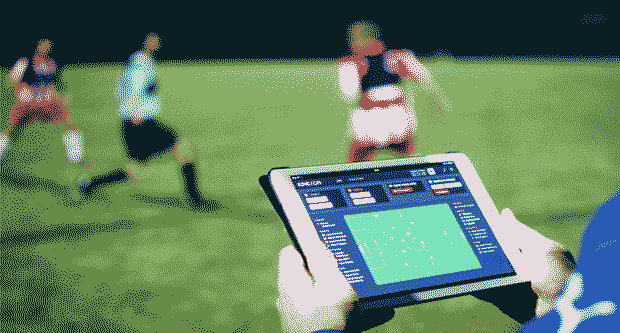Question: Can someone explain mental training techniques for peak performance from the perspective of sports psychology?
Sports psychology is a critical component in the toolkit of athletes aiming for peak performance. While physical training is undeniably important, mental fortitude often separates the good from the great. The field of sports psychology delves into the intricacies of the mind, providing athletes with the strategies to harness their mental strength effectively. This article explores various mental training techniques that athletes use to enhance their performance, focusing on visualization, mindfulness, and cognitive behavioral strategies.
Understanding Sports Psychology
Sports psychology involves the study of how psychological factors influence sports, athletic performance, exercise, and physical activity. The primary goal is to understand and apply psychological principles that help athletes maintain high performance, cope with the pressures of competition, and recover from injuries. Mental training techniques are essential tools in this field, aiding athletes in achieving their optimal state of mind for peak performance.
Visualization: Seeing Success Before It Happens
What is Visualization?
Visualization, also known as mental imagery or mental rehearsal, involves creating a vivid and detailed mental image of performing a task successfully. This technique leverages the brain’s ability to simulate real experiences, allowing athletes to rehearse and perfect their performance in their minds.
How Does Visualization Work?
When athletes visualize themselves performing a task, they activate the same neural pathways in their brains as they would during physical execution. This mental rehearsal can improve muscle memory, fine-tune motor skills, and boost confidence. For instance, a basketball player might visualize making a perfect free throw, feeling the ball’s texture, seeing the hoop, and hearing the swish as the ball goes through the net.
Benefits of Visualization
- Enhanced Performance: By mentally rehearsing their sport, athletes can improve their skills and execution during actual performance.
- Increased Confidence: Visualization helps athletes build self-belief by repeatedly experiencing success in their minds.
- Stress Reduction: Visualizing successful outcomes can reduce anxiety and stress associated with competitive situations.
- Improved Focus: Athletes can concentrate better on their tasks by visualizing each step and outcome, reducing distractions.
Implementing Visualization
To effectively use visualization, athletes should:
- Create a Quiet Environment: Find a calm and distraction-free space.
- Engage All Senses: Incorporate sights, sounds, smells, and tactile sensations.
- Be Specific and Detailed: Focus on every aspect of the performance, including movements and emotions.
- Practice Regularly: Consistency is key to reaping the benefits of visualization.
Mindfulness: Staying Present and Focused
What is Mindfulness?
Mindfulness is the practice of maintaining a non-judgmental awareness of the present moment. It involves paying attention to thoughts, feelings, and sensations without becoming overwhelmed or reactive. For athletes, mindfulness can mean staying focused on the current play instead of worrying about past mistakes or future outcomes.
How Does Mindfulness Work?
Mindfulness trains the brain to stay in the present moment, enhancing focus and reducing the negative impacts of stress and anxiety. Athletes can learn to accept their thoughts and feelings without judgment, allowing them to perform without being bogged down by negative self-talk or distractions.
Benefits of Mindfulness
- Enhanced Focus: Mindfulness helps athletes maintain concentration on the task at hand.
- Reduced Anxiety: By staying present, athletes can reduce the stress associated with high-pressure situations.
- Improved Emotional Regulation: Mindfulness allows athletes to manage their emotions better, preventing frustration from impacting performance.
- Greater Resilience: Athletes can bounce back more quickly from setbacks by staying centered and composed.
Implementing Mindfulness
Athletes can incorporate mindfulness into their training through:
- Mindful Breathing: Focus on breathing patterns to stay grounded and calm.
- Body Scans: Pay attention to physical sensations from head to toe to enhance body awareness.
- Mindful Movement: Engage in activities like yoga or tai chi to combine physical and mental focus.
- Meditation: Practice regular meditation sessions to develop and maintain mindfulness skills.
Cognitive Behavioral Strategies: Changing Thoughts to Change Performance
What are Cognitive Behavioral Strategies?
Cognitive behavioral strategies (CBS) involve identifying and changing negative thought patterns that can hinder performance. By restructuring these thoughts, athletes can alter their emotional responses and behaviors, leading to improved performance.
How Do Cognitive Behavioral Strategies Work?
CBS is based on the idea that thoughts, feelings, and behaviors are interconnected. By changing negative or unproductive thoughts, athletes can influence their emotions and actions positively. For example, instead of thinking, “I always mess up under pressure,” an athlete might reframe this to, “I have trained hard, and I can handle this challenge.”
Benefits of Cognitive Behavioral Strategies
- Improved Self-Talk: Positive self-talk can enhance confidence and reduce performance anxiety.
- Better Stress Management: Changing thought patterns helps athletes manage stress more effectively.
- Enhanced Motivation: Positive thinking boosts motivation and commitment to training and competition.
- Resilience to Setbacks: Athletes learn to view setbacks as opportunities for growth rather than failures.
Implementing Cognitive Behavioral Strategies
Athletes can apply CBS through:
- Identifying Negative Thoughts: Recognize and record negative thought patterns.
- Challenging and Reframing: Question the validity of negative thoughts and replace them with positive alternatives.
- Behavioral Activation: Engage in activities that reinforce positive thoughts and emotions.
- Goal Setting: Set realistic and achievable goals to maintain motivation and focus.
Integrating Mental Training Techniques
To maximize the benefits of these mental training techniques, athletes should integrate them into their regular training routines. Here’s how:
Consistent Practice
Mental training should be a regular part of an athlete’s regimen, just like physical training. Consistency helps in developing and maintaining these skills, ensuring they are readily available during competition.
Personalized Approach
Each athlete is unique, and what works for one may not work for another. It’s essential to personalize mental training techniques to suit individual needs, preferences, and sports.
Professional Guidance
Working with a sports psychologist or a trained mental coach can provide valuable insights and structured approaches to mental training. Professionals can help athletes navigate challenges and refine their techniques.
Monitoring and Adjustment
Athletes should regularly evaluate the effectiveness of their mental training strategies and make necessary adjustments. This ongoing process ensures that the techniques remain relevant and impactful.
Conclusion
The science of sports psychology offers powerful tools for athletes aiming for peak performance. Techniques such as visualization, mindfulness, and cognitive behavioral strategies provide a mental edge that complements physical training. By incorporating these methods into their routines, athletes can enhance their focus, reduce stress, and improve overall performance. As the understanding of sports psychology continues to grow, so too will the opportunities for athletes to push the boundaries of their potential, achieving new heights of success in their respective fields.



